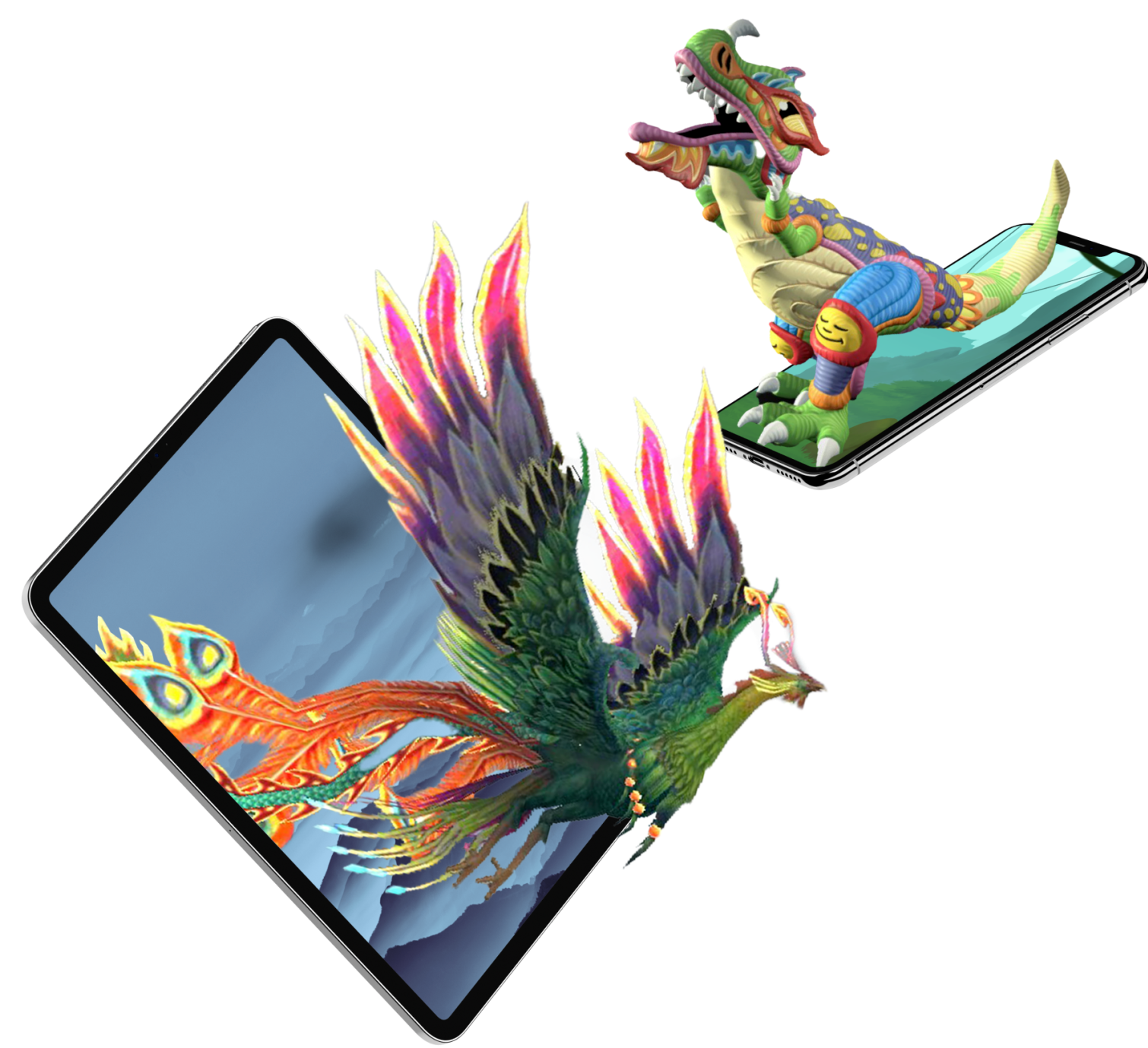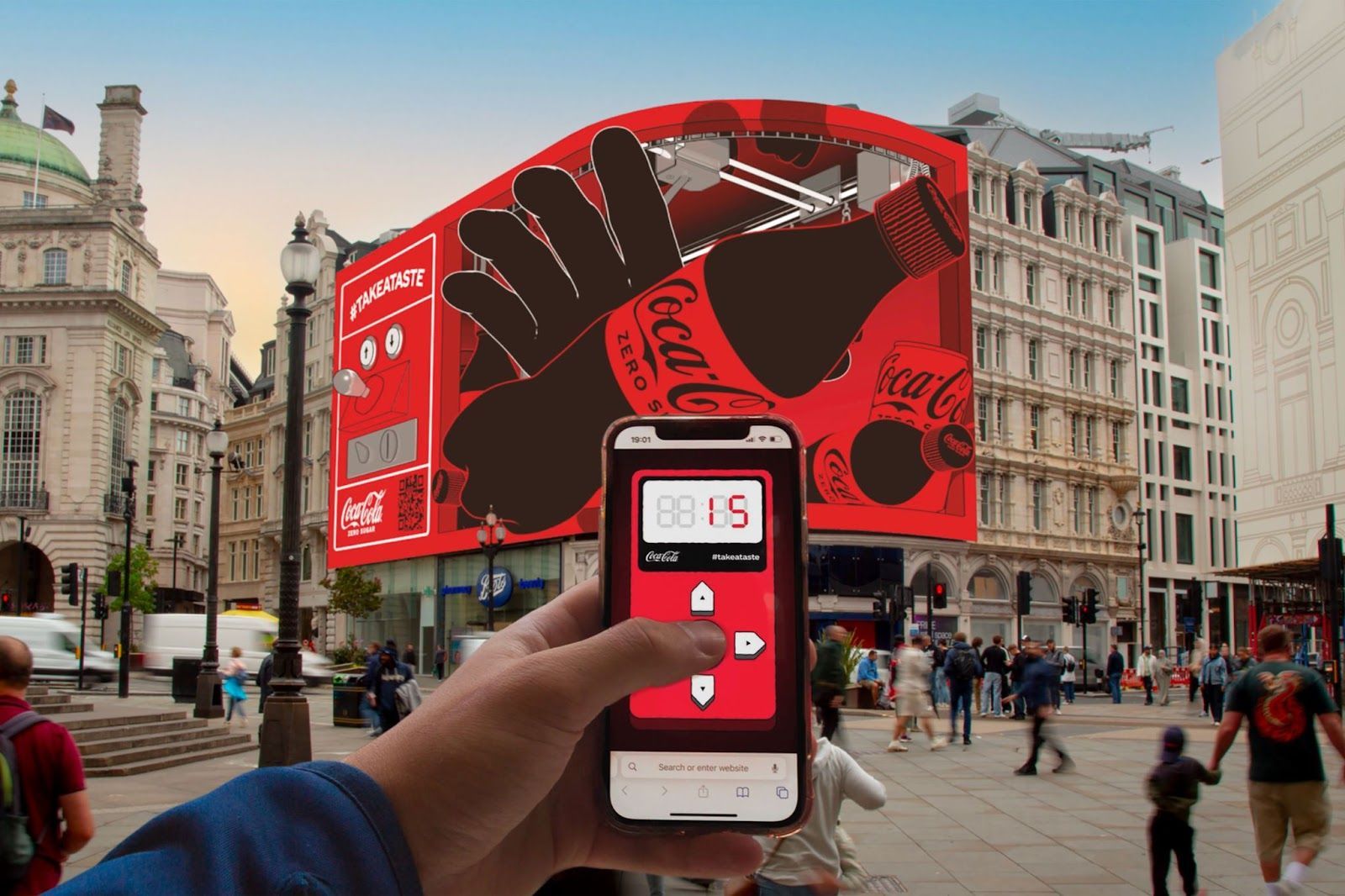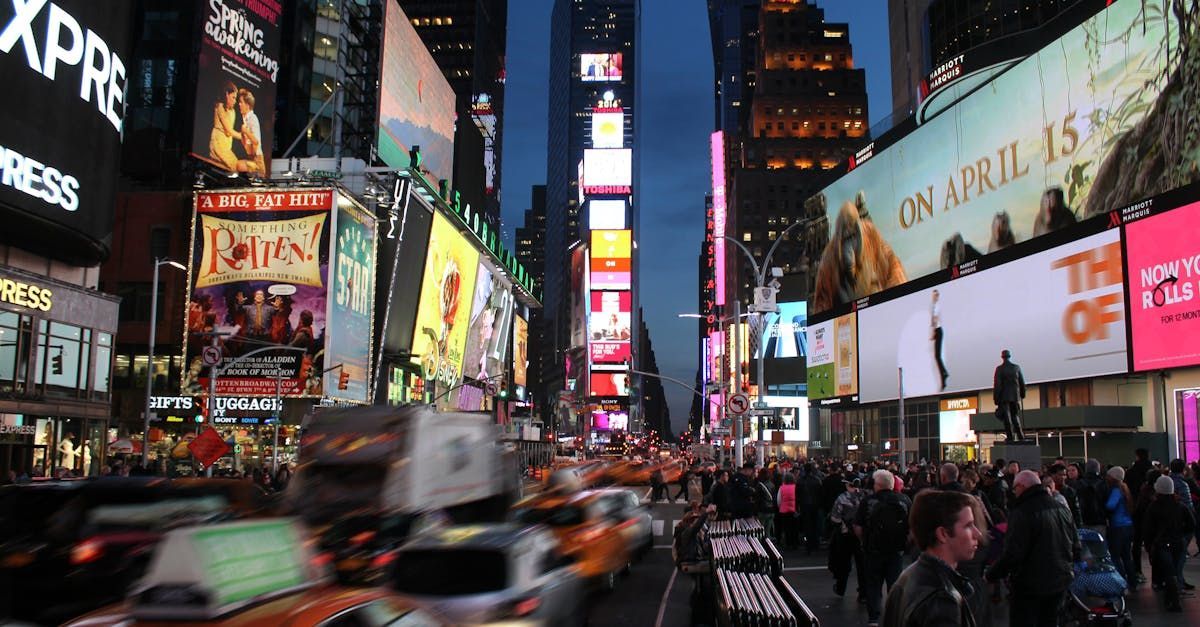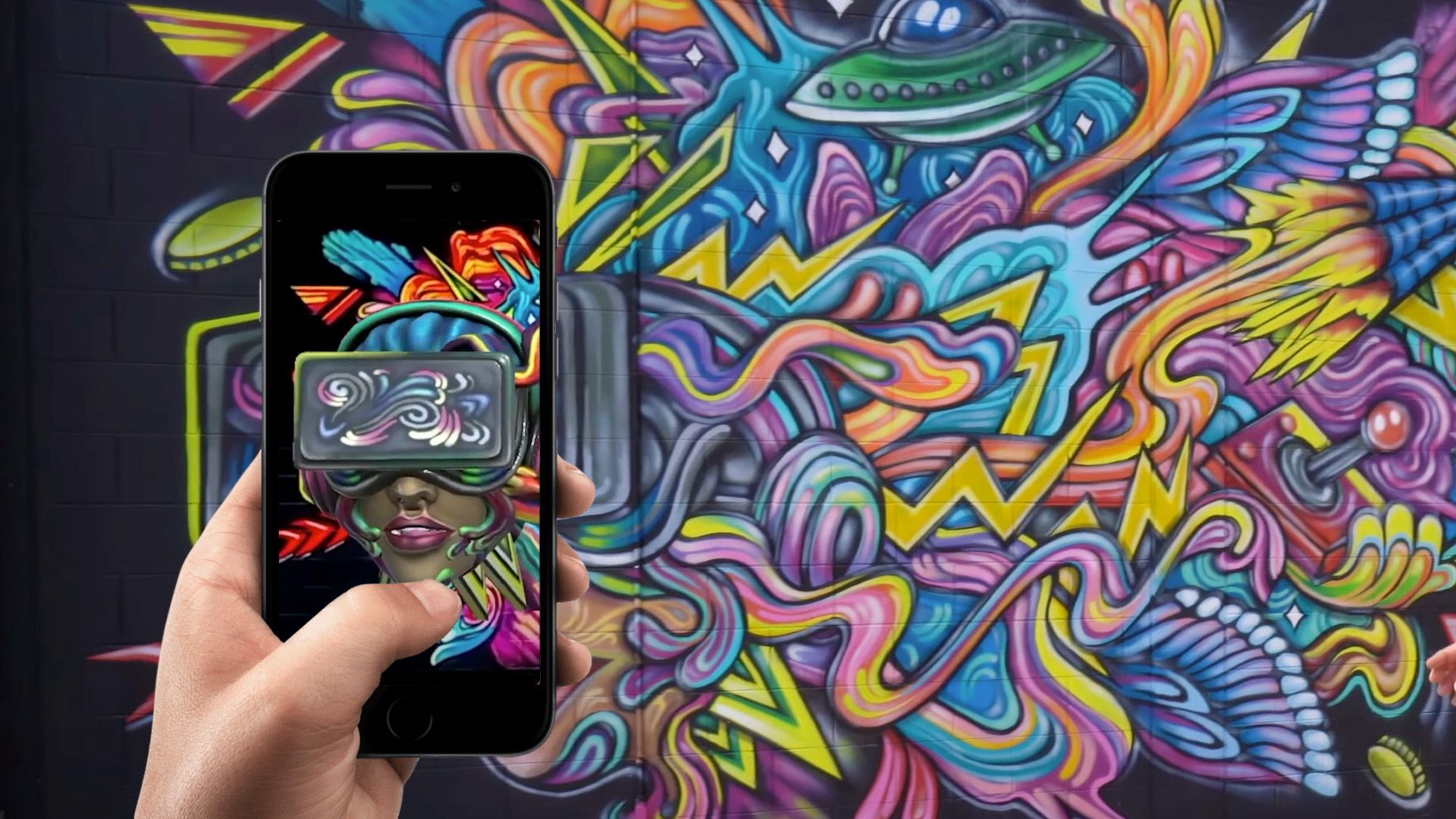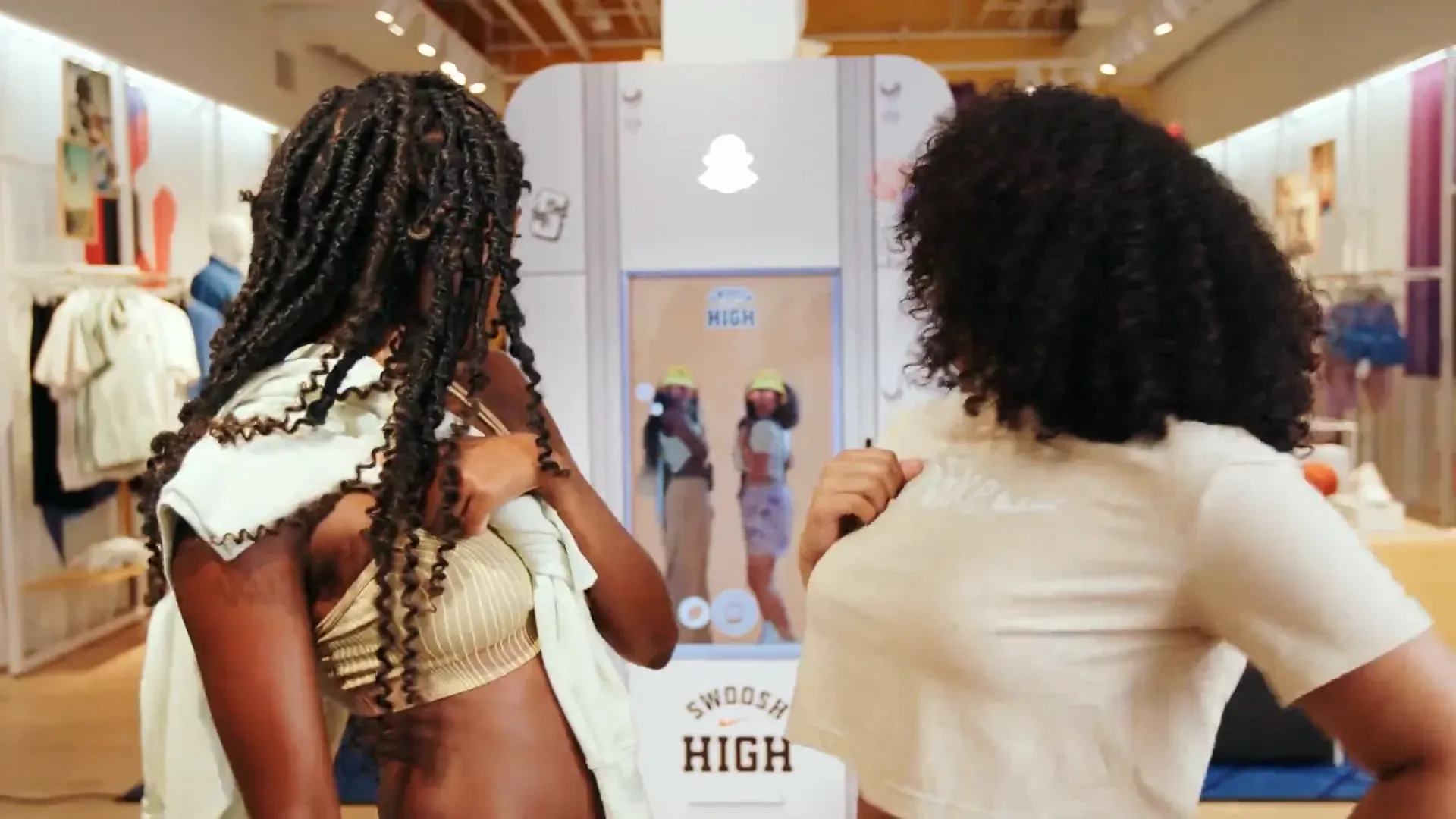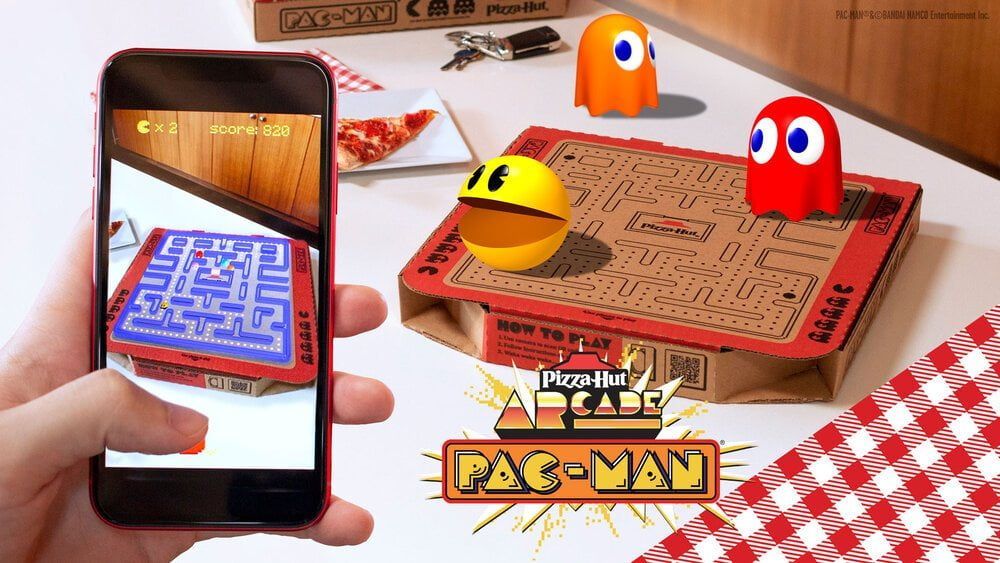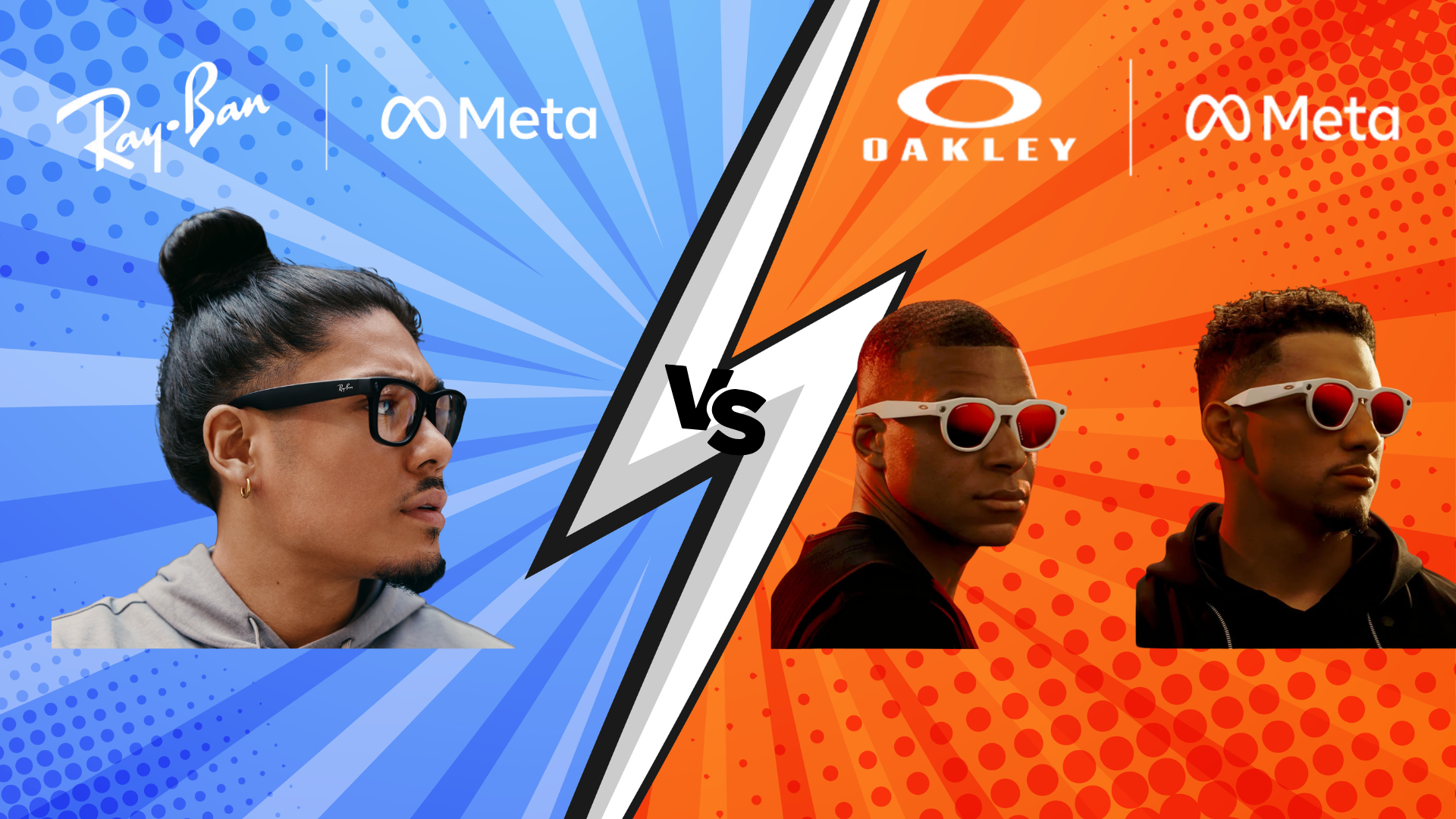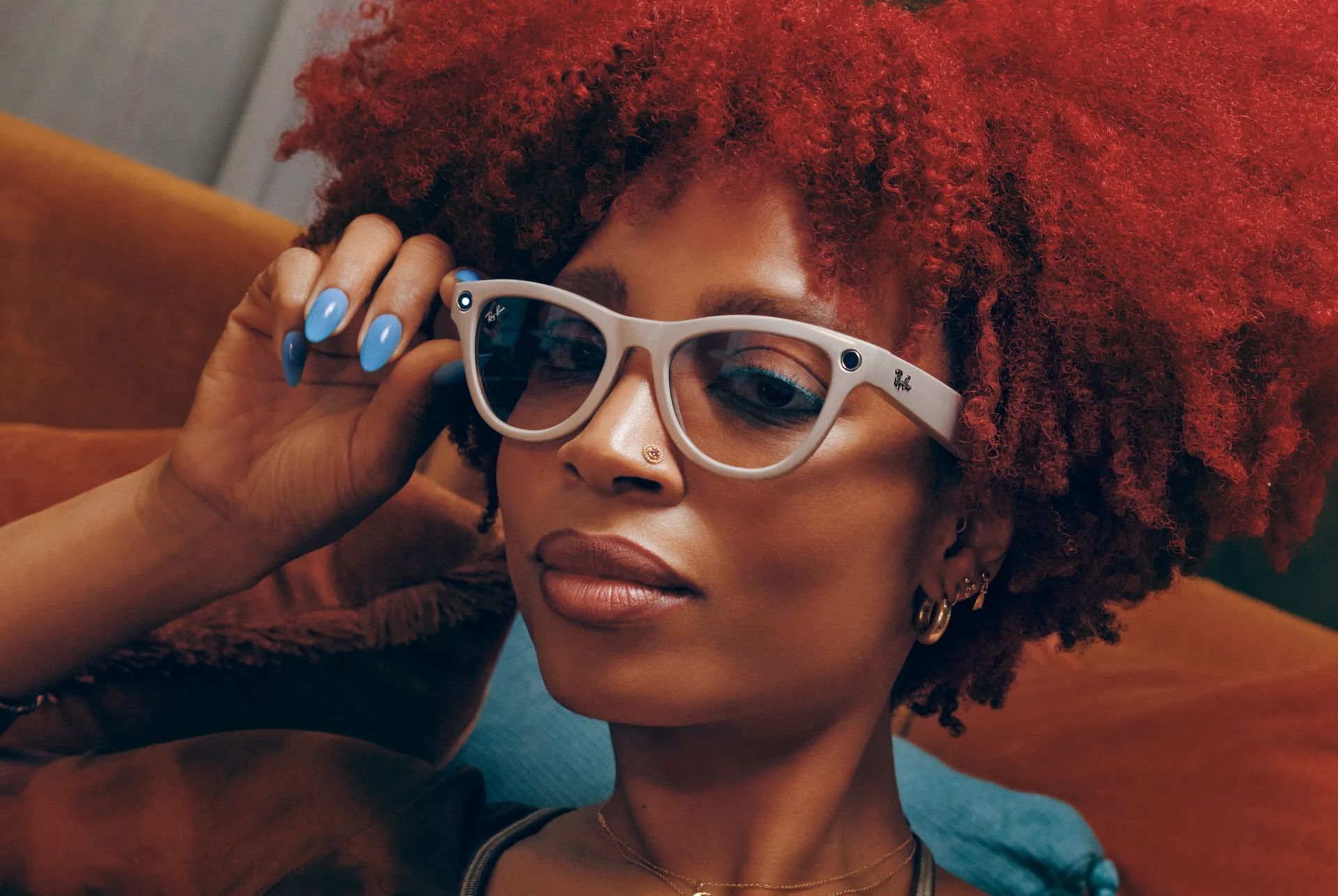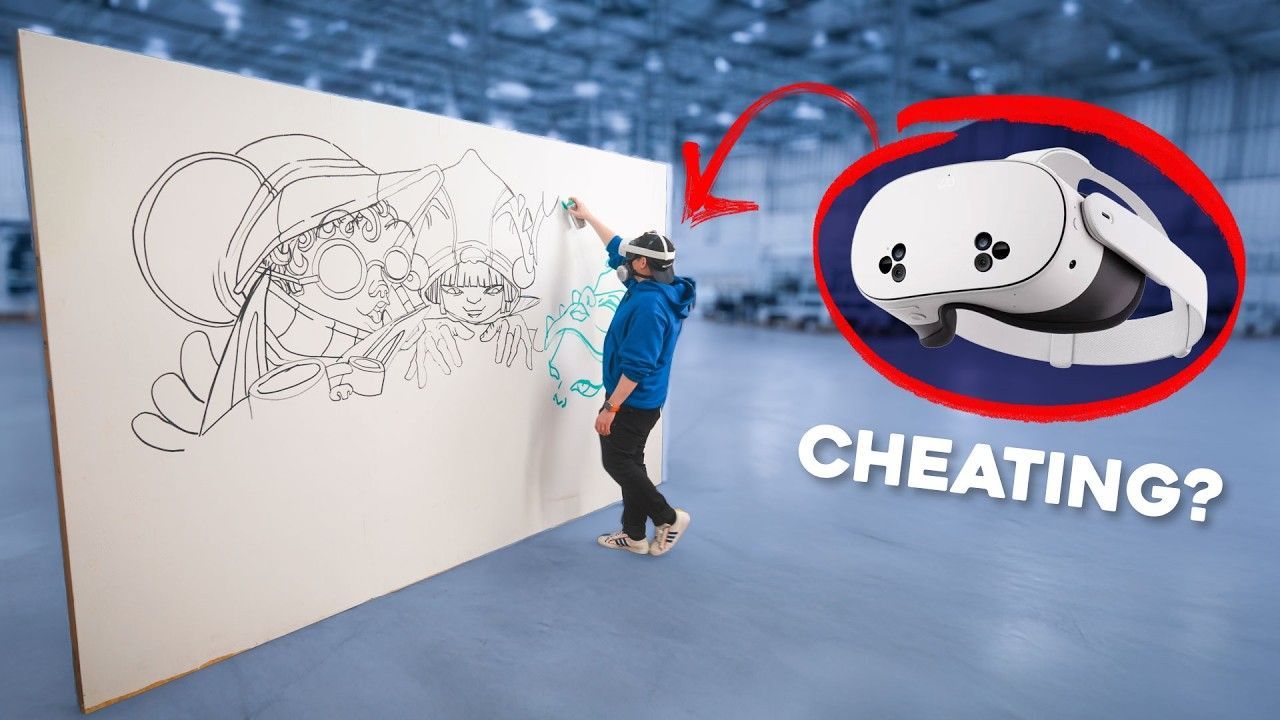The Business Case for Augmented Reality Advertising in 2025
The Attention Crisis: Why Traditional Advertising Is Losing Its Edge
In today's oversaturated digital landscape, marketers face an unprecedented challenge: capturing and maintaining consumer attention in an era of infinite scrolling and deliberate ad avoidance. Traditional static advertisements—billboards, print ads, and standard digital banners—increasingly fall flat as consumers develop what behavioral researchers call "banner blindness" and sophisticated mental filtering mechanisms.
The Statistics Behind Ad Blindness
The numbers paint a sobering picture of modern marketing's attention deficit. According to recent consumer behavior research, the average person encounters between 4,000 and 10,000 advertisements daily, yet meaningfully engages with fewer than 100. More alarming for marketers: studies show that 86% of consumers actively skip or ignore traditional display advertising, while attention spans for static content have decreased by 33% since 2015.
The Rising Cost of Consumer Attention
This attention crisis isn't just frustrating—it's expensive. Companies pour over $700 billion annually into advertising campaigns that consumers increasingly ignore, resulting in diminishing returns on marketing investments. Traditional metrics like impressions and reach no longer correlate with actual consumer engagement or purchase intent. The average cost per attention minute has tripled in the past five years, forcing brands to reconsider fundamental assumptions about how advertising works in the modern consumer landscape.
For brand managers and marketing directors, this creates a critical business problem: how can your message break through when consumers have become expert ad-avoiders and traditional formats fail to generate the engagement needed to justify increasing media budgets?
What Is Augmented Reality Advertising?
Augmented reality advertising represents a fundamental shift from passive content consumption to active experience participation. Unlike traditional advertising that interrupts or competes for attention, AR advertising creates value by enhancing the consumer's immediate environment with interactive digital elements.
Defining AR vs VR vs Mixed Reality in Advertising
Understanding the distinction between these immersive technologies is crucial for marketers:
Augmented Reality (AR) overlays digital content onto the real world through smartphone cameras, tablets, or smart glasses. Consumers remain in their physical environment while interacting with virtual elements. This accessibility makes AR the most practical choice for mass-market advertising campaigns.
Virtual Reality (VR) creates completely immersive digital environments requiring specialized headsets. While powerful for deep engagement, VR's hardware requirements limit its reach for broad advertising applications.
Mixed Reality (MR) blends physical and digital worlds more seamlessly than AR, but currently requires expensive, specialized hardware that limits consumer adoption.
For advertising purposes, AR offers the optimal balance of engagement potential and consumer accessibility, making it the dominant choice for brands seeking immersive marketing experiences.
How AR Advertising Works Technically
Modern AR advertising leverages several technical approaches:
Marker-based AR uses QR codes, images, or specific triggers that consumers scan to activate digital content. This approach offers reliable performance and works across various devices and platforms.
Markerless AR uses GPS coordinates, compass data, or visual recognition to anchor digital content to specific locations or objects without requiring specific triggers.
Web-based AR operates through standard web browsers without requiring app downloads, reducing friction and increasing adoption rates.
Social platform AR integrates with existing social media apps like Instagram, Snapchat, and TikTok, leveraging established user behaviors and massive existing audiences.
Key Benefits Over Traditional Advertising
Research demonstrates that AR advertising delivers measurably superior performance across key marketing metrics:
- Engagement rates increase by 35-40% compared to static digital advertising
- Average interaction time extends to 75 seconds versus 2-3 seconds for traditional banner ads
- Social sharing rates improve by 300% when consumers interact with AR experiences
- Brand recall increases by 70% after AR interactions versus passive ad exposure
- Purchase intent rises by 19% following positive AR brand experiences
The AR Advertising Ecosystem: Formats That Drive Engagement
The versatility of augmented reality advertising manifests through distinct formats, each optimized for different marketing objectives and consumer touchpoints.
AR Billboards: Bringing Static Displays to Life
Traditional out-of-home advertising suffers from a fundamental limitation—static messaging in a world that craves interactivity. AR billboards transform conventional displays into dynamic, responsive experiences that invite participation rather than passive consumption.
The comprehensive guide to AR billboard implementation reveals how leading brands are achieving up to 300% increases in engagement time compared to traditional OOH advertising. Consider the transformation: a standard billboard for a new vehicle might display an attractive image with a tagline. An AR billboard allows consumers to virtually customize the car's color, explore interior features, access pricing information, and even schedule test drives—all through their smartphone camera.
This format particularly excels in high-traffic locations where dwell time is sufficient for meaningful interaction. Shopping centers, transit stations, and entertainment districts represent optimal environments for AR billboard deployment.
Augmented Reality Murals: Where Art Meets Innovation
Public art has always captured attention and created community gathering points, but augmented reality murals elevate this cultural touchpoint into powerful marketing platforms. These installations merge artistic expression with cutting-edge technology, creating Instagram-worthy moments that drive organic sharing and extend campaign reach far beyond the physical location.
Creating successful AR mural campaigns requires balancing artistic integrity with brand messaging. The most effective campaigns enhance rather than overwhelm the underlying artwork, creating experiences that feel authentic to the local community while advancing brand objectives.
A compelling example is Alabama's largest hand-painted AR mural, which transformed static artwork into an interactive storytelling medium. Visitors experienced an average engagement time of 118 seconds—far exceeding typical advertising interaction durations. More importantly, 67% of participants shared their experience on social media, generating earned media value that exceeded the campaign's initial investment by 4:1.
Social AR Filters: Turning Users Into Brand Ambassadors
Social media AR filters represent perhaps the most accessible entry point into augmented reality advertising. These lightweight experiences integrate seamlessly with platforms where consumers already spend significant time, reducing adoption friction while maximizing viral potential.
The NBA's Instagram filter campaign demonstrates this format's power: a simple basketball-themed AR experience generated over 3.2 million uses and 47 million impressions as users shared their interactions across social networks. The campaign's success stemmed from its focus on entertainment value rather than overt brand messaging, creating experiences consumers actively sought to share.
Successful social AR filters share common characteristics:
- Entertainment value that motivates organic sharing
- Brand integration that feels natural rather than forced
- Technical simplicity that works reliably across device types
- Cultural relevance that connects with platform-specific behaviors
AR Product Visualization
Retail and e-commerce brands increasingly leverage AR for product visualization, allowing consumers to preview purchases in their own environments before buying. This application addresses one of online shopping's primary friction points: uncertainty about how products will look, fit, or function in real life.
Beauty brands lead this category with virtual try-on experiences for makeup, hair colors, and skincare routines. Furniture retailers enable customers to place full-scale virtual furniture in their homes, while automotive brands offer detailed vehicle exploration experiences that rival physical showroom visits.
Location-Based AR Experiences
GPS-enabled AR creates persistent digital layers anchored to specific geographic locations. Theme parks, museums, retail stores, and tourist destinations use this technology to provide contextual information, entertainment, and promotional offers based on visitors' precise locations.
These experiences excel at driving foot traffic and encouraging exploration of physical spaces. Successful implementations reward discovery, provide genuine utility, and create shareable moments that extend marketing reach through social amplification.
Real-World Impact: AR Campaigns That Delivered Measurable Results
While AR advertising technology is impressive, marketers ultimately care about business results. These detailed case studies illustrate the real-world impact of strategically executed AR campaigns across different industries and objectives.
Chevrolet at CMA Fest: Driving Engagement Through Interactive Experiences
At Nashville's Country Music Association Festival, Chevrolet faced a common challenge: standing out in an environment saturated with brand activations and competing for festival-goers' attention. Their solution was a custom AR Instagram filter that transformed standard photo opportunities into shareable branded moments.
The campaign's execution demonstrates AR advertising's unique value proposition. Rather than interrupting the festival experience, the AR filter enhanced it by enabling attendees to create personalized content that aligned with their social media goals while subtly reinforcing Chevrolet's brand presence.
Results achieved:
- Over 108,000 filter uses during the four-day festival
- Average interaction time of 31 seconds per use
- 73% of users shared their AR experience on social media
- Estimated earned media value of $847,000
- Post-festival brand awareness lift of 12% among target demographics
What made this campaign particularly notable was its deployment using BrandXR's no-code platform, allowing Chevrolet's marketing team to implement a sophisticated AR experience without specialized technical resources or extended development timelines.
Read the full Chevy Case Study.
Inter Miami and XBTO: Creating Landmark AR Experiences
When cryptocurrency trading platform XBTO partnered with Inter Miami CF, they sought to create something beyond conventional sports sponsorship. The result was an AR mural campaign that transformed Miami's urban landscape into an interactive celebration of the partnership while establishing a permanent branded destination.
The campaign's success stemmed from its multi-layered approach to engagement. The physical mural created a striking visual presence that drew attention from pedestrians and drivers. The AR component rewarded closer interaction with exclusive content, team information, and promotional offers that connected digital engagement to real-world value.
Performance metrics:
- Over 5.7 million social media impressions
- Average engagement time of 76 seconds per AR interaction
- 2,847 location check-ins during the first month
- 34% increase in local brand awareness for XBTO
- Ongoing engagement six months post-launch, demonstrating lasting impact
This campaign exemplifies AR advertising's unique ability to create persistent experiences that deliver value over extended periods, unlike traditional advertising that provides only momentary exposure. Read the full Inter Miami Case Study.
NBA All-Star 2023: Setting New Standards for Event Activation
Major sporting events present both tremendous opportunities and significant challenges for brand engagement. The competition for attention is intense, media costs are premium, and consumer expectations are elevated. For NBA All-Star 2023, organizers deployed an innovative "Unscramble" Instagram filter that transformed passive spectators into active participants.
The campaign's genius lay in its simplicity and integration with the event experience. Rather than competing with the basketball action, the AR filter enhanced downtime moments—timeouts, halftime, pre-game—when fans naturally reached for their phones. The unscrambling game mechanic created just enough challenge to be engaging while remaining accessible to users of all ages and technical abilities.
Campaign results:
- Over 20 million filter impressions during All-Star weekend
- 89% completion rate for the unscrambling game
- Average session duration of 43 seconds
- 156% increase in event hashtag usage
- Post-event engagement continuing for six weeks
The campaign's extended engagement window demonstrates AR's ability to create lasting connections that extend well beyond the initial activation period.
Read the full NBA Case Study.
The ROI of Augmented Reality Advertising
Understanding the financial impact of AR advertising requires examining both direct costs and measurable returns across different campaign types and industries.
Cost Comparison: AR vs Traditional OOH
Traditional OOH advertising costs include media space rental, creative production, installation, and maintenance. AR campaigns add technology development and platform costs but often reduce overall expenses through extended campaign lifespans and enhanced engagement efficiency.
Typical cost structures:
Traditional Billboard Campaign (4 weeks):
- Prime location rental: $15,000-$45,000
- Creative production: $3,000-$8,000
- Installation/maintenance: $2,000-$5,000
- Total: $20,000-$58,000
AR Billboard Campaign (4 weeks):
- Location rental: $15,000-$45,000
- AR development (no-code platform): $3,000-$7,500
- Creative production: $10,000-$20,000
- Total: $28,000-$72,500
While initial costs are comparable, AR campaigns typically deliver 3-5x higher engagement rates and generate additional value through social sharing, data collection, and extended interaction times.
Measuring AR Campaign Success: Key Metrics
AR advertising enables measurement of engagement quality, not just quantity. Key performance indicators include:
Primary Engagement Metrics:
- Activation rate: Percentage of viewers who engage with AR content
- Session duration: Average time spent interacting with AR experiences
- Completion rate: Percentage of users who complete intended interactions
- Return engagement: Users who interact multiple times
Amplification Metrics:
- Social sharing rate: Percentage of users who share AR experiences
- Earned media value: Estimated value of organic social distribution
- User-generated content creation: Original content featuring brand AR experiences
Business Impact Metrics:
- Brand awareness lift: Pre/post campaign brand recognition
- Purchase intent increase: Measured changes in buying consideration
- Conversion rate: Direct sales or leads generated from AR interactions
- Customer acquisition cost: Cost per new customer acquired through AR campaigns
Average Performance Benchmarks by Industry
Retail/E-commerce:
- Average engagement rate: 23%
- Session duration: 68 seconds
- Conversion lift: 31%
Entertainment/Events:
- Average engagement rate: 34%
- Session duration: 89 seconds
- Social sharing rate: 67%
Automotive:
- Average engagement rate: 19%
- Session duration: 127 seconds
- Lead generation rate: 8%
Beauty/Fashion:
- Average engagement rate: 41%
- Session duration: 76 seconds
- Conversion lift: 64%
Industry Applications: Where AR Advertising Works Best
Different industries leverage AR advertising for distinct objectives, with success strategies varying based on consumer behavior patterns and purchase consideration processes.
Retail and E-commerce
Retail applications focus on reducing purchase friction by enabling consumers to preview products in their own environments. Virtual furniture placement, clothing try-ons, and cosmetics testing address the primary barrier to online purchasing: uncertainty about real-world product appearance and fit.
Most effective AR retail applications:
- Virtual try-on experiences for clothing, accessories, and cosmetics
- Furniture and home decor placement in consumer spaces
- Product customization and configuration tools
- In-store navigation and product information overlays
Key success factors:
- High-quality 3D product models that accurately represent physical items
- Seamless integration with existing e-commerce platforms
- Mobile-optimized experiences that work reliably across device types
- Clear pathways from AR interaction to purchase completion
Entertainment and Events
Entertainment brands use AR to extend experiences beyond physical venues and create shareable moments that amplify marketing reach. Concerts, festivals, sports events, and theatrical productions leverage AR to enhance attendee experiences while generating social media content.
Effective entertainment AR strategies:
- Interactive photo opportunities that encourage social sharing
- Behind-the-scenes content accessible through AR triggers
- Gamified experiences that reward exploration and engagement
- Artist or performer virtual meet-and-greets
Real Estate and Tourism
Location-based industries use AR to showcase properties and destinations that consumers might not easily visit in person. Virtual property tours, historical site information overlays, and destination previews help consumers make informed decisions about significant investments or travel plans.
Tourism AR applications:
- Historical information overlays at landmarks and attractions
- Virtual hotel room tours and amenity previews
- Restaurant menu translation and dish visualization
- Navigation assistance and local recommendations
Automotive and Technology
High-consideration purchases benefit from AR's ability to provide detailed product exploration without requiring physical showroom visits. Automotive brands lead this category with virtual vehicle customization, interior exploration, and feature demonstration experiences.
Automotive AR success strategies:
- Virtual vehicle customization and configuration
- Interior feature demonstrations and explanations
- Comparison tools showing multiple vehicle options
- Service and maintenance information overlays
The Technology Evolution: How AR Is Becoming More Accessible
The democratization of AR technology represents one of the most significant developments enabling mainstream adoption of augmented reality advertising.
From Six-Figure Budgets to No-Code Solutions
Early AR advertising required specialized development teams, proprietary software, and budgets exceeding $100,000 for basic campaigns. Today's no-code platforms like BrandXR enable marketing teams to create, deploy, and optimize AR experiences without technical expertise or extended development cycles.
This accessibility revolution means that AR advertising is no longer limited to enterprise brands with substantial technology budgets. Small and medium businesses can now deploy sophisticated AR experiences for a fraction of historical costs.
Hardware Advances: Smart Glasses and Beyond
Consumer hardware continues evolving toward more seamless AR integration. The introduction of devices like Ray-Ban Meta Smart Glasses removes the friction of smartphone-based AR interactions, creating more natural and immersive experiences for consumers.
Understanding Ray-Ban Meta Smart Glasses for marketing reveals how wearable AR devices will transform advertising by eliminating the barrier between digital content and natural vision. As these devices achieve broader adoption, AR advertising will become increasingly integrated into consumers' daily visual experiences.
Platform Integration: Social Media and AR
Major social media platforms have invested heavily in AR capabilities, with Instagram, Snapchat, TikTok, and Facebook offering sophisticated AR creation tools and massive distribution networks. This integration eliminates the need for standalone AR apps while leveraging existing user behaviors and platform familiarity.
The result is AR advertising that feels native to consumers' existing digital habits rather than requiring new behaviors or technology adoption.
Creating Your First AR Campaign: A Practical Roadmap
Successfully deploying AR advertising requires strategic planning, appropriate format selection, and systematic execution. This practical guide provides a framework for marketers ready to implement their first AR campaign.
Pre-Campaign Planning and Strategy
Define Clear Objectives: Start with specific, measurable goals that align with broader marketing objectives:
- Brand awareness increase among specific demographics
- Engagement rate improvements over current advertising
- Social media amplification and earned media generation
- Direct lead generation or sales conversion
- Foot traffic increases to physical locations
Identify Your Target Audience: AR advertising works best when aligned with audience preferences and behaviors:
- Demographics that actively use smartphones and social media
- Consumer segments comfortable with interactive technology
- Audiences seeking entertainment, information, or utility from brand interactions
Set Success Metrics: Establish benchmarks for measuring campaign performance:
- Engagement rate targets based on industry averages
- Social sharing goals that extend campaign reach
- Conversion or lead generation expectations
- Brand awareness lift measurements
Choosing Your AR Format and Platform
Match Format to Objectives:
For brand awareness and social amplification: Social AR filters on Instagram, Snapchat, or TikTok provide maximum reach and viral potential.
For location-based engagement: AR billboards, murals, or location-triggered experiences create destination marketing and foot traffic drivers.
For product consideration: AR product visualization and virtual try-on experiences address purchase barriers and improve conversion rates.
For event amplification: Interactive AR experiences enhance attendee engagement while generating shareable content.
Platform Selection Criteria:
- Audience alignment with your target demographics
- Technical capabilities matching your creative vision
- Budget requirements and development complexity
- Distribution reach and viral potential
- Analytics and measurement capabilities
Creative Development Best Practices
Focus on Value Creation: The most successful AR campaigns provide genuine utility, entertainment, or information rather than purely promotional content. Ask: "What value does this AR experience provide to consumers beyond brand exposure?"
Design for Mobile: AR advertising primarily occurs on smartphones, requiring creative optimization for small screens, touch interactions, and varying lighting conditions.
Test Across Devices: Ensure consistent performance across different smartphone models, operating systems, and technical specifications to maximize accessibility.
Plan for Sharing: Design experiences that naturally encourage social sharing through surprising moments, personalization, or entertainment value.
Technical Implementation Without Coding
No-code AR platforms like BrandXR enable marketing teams to deploy sophisticated campaigns without technical development:
Content Creation Process:
- Upload creative assets (images, videos, 3D models)
- Configure AR triggers and interactions through visual interfaces
- Customize user interface elements and calls-to-action
- Preview and test experiences across devices
- Deploy to chosen platforms and distribution channels
Quality Assurance:
- Test AR experiences in various lighting conditions
- Verify performance across different smartphone models
- Confirm analytics tracking is properly configured
- Validate social sharing functionality works correctly
Launch and Performance Optimization
Soft Launch Strategy: Begin with limited distribution to test performance and identify optimization opportunities before full campaign deployment.
Real-Time Monitoring: Track engagement metrics, technical performance, and user feedback to identify improvement opportunities during the campaign.
Iterative Optimization: AR campaigns can be updated and optimized remotely, allowing real-time improvements based on performance data and user behavior.
Overcoming Common AR Advertising Challenges
While AR advertising offers significant advantages, successful implementation requires addressing predictable challenges that can impact campaign performance.
User Adoption and Education
Challenge: Consumers may be unfamiliar with AR interaction patterns or hesitant to engage with new technology.
Solutions:
- Provide clear, simple instructions for AR activation
- Use familiar interaction patterns from popular apps
- Offer immediate value that justifies the learning curve
- Include demonstration videos showing expected interactions
Technical Limitations and Solutions
Challenge: AR experiences must work reliably across diverse devices, lighting conditions, and technical environments.
Solutions:
- Design for minimum common device specifications
- Test extensively across different smartphones and conditions
- Provide fallback experiences for devices with limited AR capabilities
- Optimize file sizes for faster loading and better performance
Budget Considerations for Different Campaign Types
Challenge: Understanding true costs and ROI potential across different AR advertising formats.
Solutions:
- Start with simple formats like social AR filters to test audience response
- Use no-code platforms to minimize development costs
- Focus on formats that align with existing marketing objectives
- Measure comprehensive ROI including engagement quality and earned media value
The Future of AR Advertising: What's Next on the Horizon
Several emerging technologies and trends will significantly impact AR advertising's evolution and effectiveness in the coming years.
AR Cloud and Spatial Computing
The development of persistent AR layers anchored to physical locations—often called the "AR Cloud"—will enable brands to create permanent digital content tied to specific places. This evolution will transform how consumers navigate and interact with physical spaces, creating new opportunities for location-based marketing that persists beyond individual campaign periods.
Imagine walking through a shopping district where every storefront offers persistent AR experiences providing product information, reviews, promotional offers, and interactive demonstrations. This spatial computing infrastructure will make AR advertising as ubiquitous as traditional signage while offering infinitely more engagement potential.
5G and Edge Computing Impact
The widespread deployment of 5G networks combined with edge computing capabilities will eliminate current bandwidth and processing constraints that limit AR experience complexity. This technical evolution enables:
- Real-time rendering of photorealistic 3D content
- Multiplayer AR experiences supporting simultaneous users
- Cloud-based processing reducing device hardware requirements
- Instant loading of complex AR content without buffering delays
AI-Powered Personalization
The integration of artificial intelligence with AR will enable dynamically personalized experiences that adapt based on individual user preferences, demographics, and behavior patterns. Future AR billboards might customize their content in real-time based on the viewer's age, interests, or previous brand interactions.
This personalization extends beyond demographics to contextual adaptation: AR experiences that adjust based on time of day, weather conditions, local events, or social trends.
Cross-Platform Integration
As the AR ecosystem matures, expect seamless experiences that work consistently across devices and platforms—from smartphones to tablets, smart glasses, and eventually lightweight AR contact lenses. This interoperability will eliminate platform fragmentation that currently requires separate development for different AR environments.
Getting Started: Your Next Steps in AR Advertising
The evolution from static to interactive advertising represents a fundamental shift in how brands connect with consumers in physical and digital spaces. AR advertising offers a unique opportunity to increase engagement while gathering rich interaction data that improves marketing effectiveness over time.
Immediate Actions for Marketing Teams:
1. Audit Your Current Advertising Performance Evaluate engagement rates, interaction times, and conversion metrics for existing campaigns to establish baseline performance for AR comparison.
2. Identify High-Impact Opportunities Look for current advertising placements or campaigns where interactivity could significantly improve results:
- Static billboards in high-traffic locations
- Social media campaigns seeking higher engagement
- Product launches requiring demonstration or trial
- Events where attendee participation could be enhanced
3. Start with Accessible Formats Begin AR advertising exploration with social media filters or simple location-based experiences that require minimal investment while providing measurable results.
4. Develop Internal AR Literacy Educate your marketing team about AR capabilities, limitations, and best practices through hands-on experience with existing AR campaigns and platforms.
Strategic Considerations for Campaign Planning:
Content Strategy Integration: AR advertising works most effectively as part of integrated campaigns that span multiple touchpoints and reinforce consistent messaging across channels. Consider how AR experiences can enhance your broader experiential marketing technology strategy and support long-term brand objectives.
Measurement Framework: Establish comprehensive measurement approaches that capture AR advertising's unique value propositions beyond traditional metrics. Focus on engagement quality, social amplification, and business impact rather than purely quantitative measures.
Technology Platform Selection: Choose AR development platforms that align with your team's technical capabilities and campaign complexity requirements. No-code solutions offer accessibility and speed, while custom development provides maximum creative flexibility.
Long-Term Strategic Planning:
As AR technology continues evolving, consider how immersive advertising fits into your organization's five-year marketing strategy. Stay informed about emerging OOH advertising trends and AR innovations that will shape future campaign opportunities and consumer expectations.
The brands achieving the greatest success with AR advertising are those that view it not as a novelty or one-off activation, but as a fundamental evolution in how marketing creates value for consumers while achieving business objectives.
TALK TO A PRO
We're here to bring your brand to life!
Stay Connected with BrandXR
Create Augmented Reality for Free!
Create, Publish, and Measure 3D Augmented Reality Experiences Without Having to Code.
